Shiraiwa Sabo Dam -The highest Dam in Japan-
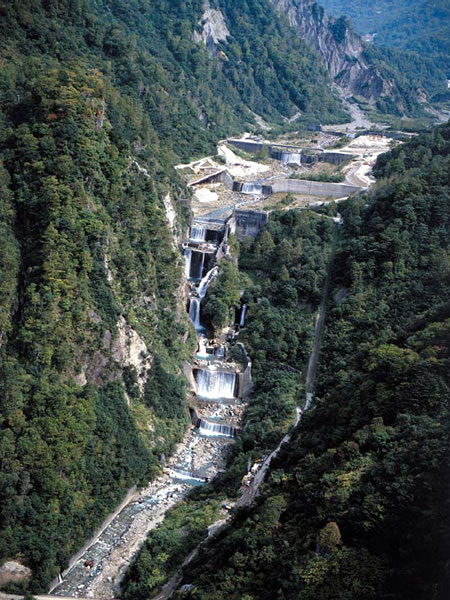
Elevation view of Shiraiwa Sabo Main Dam
The huge amount of sediment accumulated in the Tateyama Caldera is a potential threat to the lower reaches of Joganji River including the Toyama Plain. The Shiraiwa Sabo Dam is the key sabo works of the sediment control plan for Joganji River and was constructed to prevent the uncontrolled discharge of sediment at the exit of the caldera. Its effectiveness was well proven by the 1969 disaster.
The height of the Shiraiwa Sabo Dam is 63 m, and if 7 counter dams are combined, the head drop is 108 m. The height of the main dam and the counter dams are still the highest in Japan, even now.
However, its construction was difficult, such as the severe natural environment of the mountain, the long snow covering period, limited construction period, etc.
The latest construction methods at the time, such as conrrete mixer, derrick crane etc. was introduced. It took more than 10 years to finish its construction in 1939.
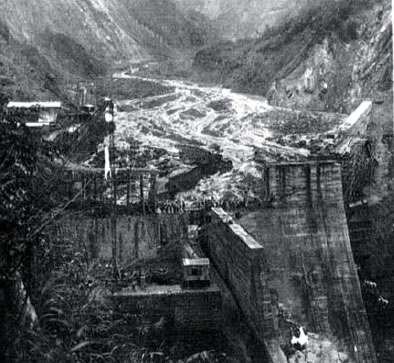
Shiraiwa Sabo Dam under construction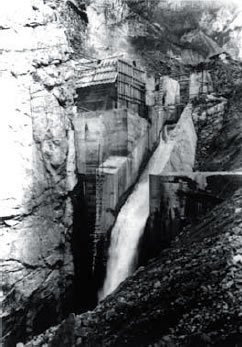
No.1 temporary drainage was closed (1931)
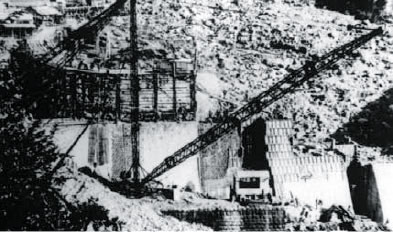
Crane and other latest equipment were used for concrete casting.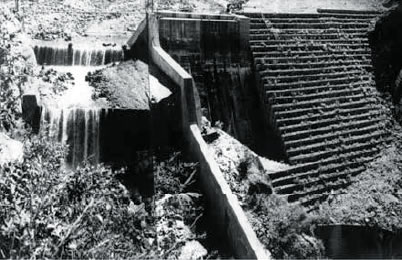
The completion of Shiraiwa Sabo Dam (1939)
